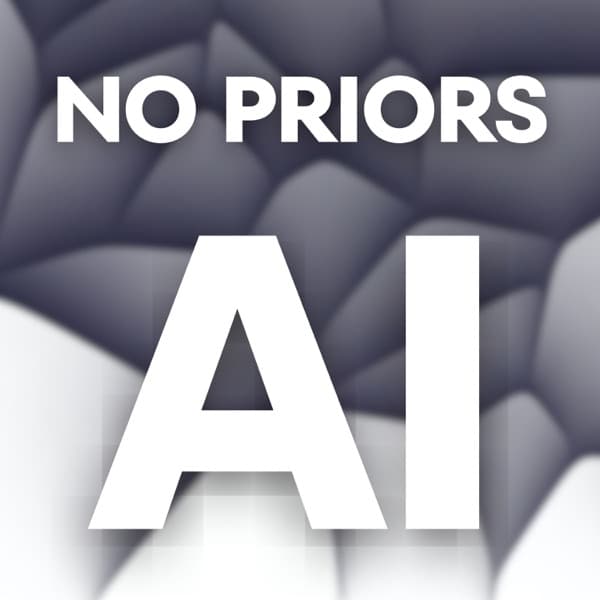Fireship: The UK demands Apple create a backdoor to access encrypted iCloud data, challenging global privacy.
Lightcone Podcast: The discussion focuses on finding innovative startup ideas in AI by leveraging unique experiences, exploring new industries, and understanding market needs.
The Twenty Minute VC (20VC): Venture Capital | Startup Funding | The Pitch: Brian Tolkien, head of product at Opendoor, shares insights on product strategy, lessons from Uber, and the evolving role of product managers in an AI-driven world.
Fireship - UK demands backdoor for encrypted Apple user data...
The UK government has issued a technical capability notice to Apple, demanding the creation of a backdoor to access users' encrypted iCloud data globally. This demand is part of the UK's broader surveillance efforts under the Investigatory Powers Act of 2016, which grants extensive data access capabilities to intelligence agencies. The notice is controversial because it challenges the privacy protections offered by Apple's Advanced Data Protection service, which uses end-to-end encryption, meaning only users have the keys to their data. The UK government's demand is seen as a threat to global privacy, as it could set a precedent for other countries to follow. Apple has historically resisted such demands, as seen in their refusal to unlock an iPhone for the FBI in 2016. The video suggests that Apple might negotiate a compromise, potentially discontinuing the service in the UK. For users concerned about privacy, the video recommends using end-to-end encrypted apps, full disk encryption, VPNs, and the Tor browser to protect their data.
Key Points:
- UK demands Apple create a backdoor for iCloud data access.
- Apple's Advanced Data Protection uses end-to-end encryption.
- UK's Investigatory Powers Act enables extensive surveillance.
- Apple historically resists government data access demands.
- Users should use encryption tools and VPNs for privacy.
Details:
1. 🔍 British Empire's Demand for Backdoor Access
- The British Empire issued a secret technical capability notice to Apple, mandating the creation of a backdoor to access users' encrypted iCloud data globally.
- This demand raises significant concerns around user privacy and data security, challenging Apple's commitment to encryption and privacy.
- Apple's response has been one of resistance, emphasizing their dedication to user privacy and encryption without compromises.
- The legal framework for such demands is complex and often involves balancing national security interests with individual privacy rights.
- This demand is part of a broader trend of governments seeking increased access to encrypted communications, reflecting ongoing tensions between privacy advocates and law enforcement.
2. 🔓 Global Implications for Encrypted Apps
- The shift affects not only specific regions but has worldwide implications for all users who can afford Apple products, indicating a significant global shift in privacy expectations and user security.
- The announcement serves as a crucial warning for users of end-to-end encryption apps like Telegram, Signal, and WhatsApp, highlighting potential risks and the need for increased awareness and security measures.
- This change prompts a reevaluation of how encrypted communication apps operate globally, emphasizing the necessity for companies to adapt their strategies to maintain user trust and compliance with varying regional laws.
- For example, countries with strict data privacy laws could see increased scrutiny on these apps, potentially leading to changes in how companies handle user data and encryption.
- As global digital privacy concerns rise, users and companies alike must stay informed about policy changes and their implications on personal and professional communications.
3. 🕵️ UK Surveillance and Legal Secrecy
- The UK Investigatory Powers Act of 2016 grants MI5 and MI6 extensive 'god mode' hacking capabilities, allowing them to bypass digital security measures.
- Internet service providers are mandated to retain records of all websites visited by users, enabling comprehensive mass surveillance.
- It is illegal for companies like Apple to disclose government surveillance demands, highlighting a significant level of legal secrecy and lack of transparency.
- The law's broad scope raises concerns about privacy and civil liberties, as it allows extensive monitoring without public scrutiny.
- In comparison, countries like Germany have stricter oversight and limitations on surveillance, emphasizing the UK's unique approach to national security.
- The Act's implications for digital privacy set a precedent in international surveillance practices and challenge existing norms in data privacy.
4. 🔐 Understanding iCloud Encryption
- The segment explores the implications of encryption for iCloud users, emphasizing the importance of end-to-end encryption in safeguarding private data.
- The technology behind end-to-end encryption is described as amazing and essential for privacy protection.
- The segment humorously suggests preventing even a figure like James Bond from accessing your private data, highlighting the strength of encryption.
5. 🔑 Apple's Encryption Methods and Government Concerns
- Apple's iCloud data storage reaches the exabyte scale, indicating the vast amount of data stored.
- Data in iCloud is encrypted both in transit and at rest, ensuring security during upload and storage.
- Private keys for decryption are stored in Apple's data centers, making them theoretically accessible under government pressure.
- Government access to data is a concern due to potential legal obligations Apple may face to provide access to iCloud contents.
- Apple's approach emphasizes user privacy, but storing decryption keys within their data centers poses a risk if compelled by governments to release them.
- Apple's strong encryption has been a point of contention with law enforcement agencies seeking access to user data for legal investigations.
6. 🛡️ Advanced Data Protection and Its Challenges
- Apple's Advanced Data Protection service, launched in 2022, employs end-to-end encryption, empowering users to manage and control their own encryption keys, thus ensuring that even Apple cannot access their data.
- A critical challenge associated with this service is the potential for data loss if users lose their encryption keys, highlighting the need for robust key management strategies by users.
- The evolution of end-to-end encryption includes technologies like the double ratchet algorithm, used by apps such as Signal and WhatsApp, which ensures forward secrecy and prevents the decryption of past or future messages if a key is compromised.
- The implementation of advanced encryption poses significant challenges to government surveillance, with limited options for access unless advancements in quantum computing occur that could potentially break current encryption standards.
- Implications for users include a higher responsibility for managing their encryption keys securely, and the broader impact on privacy and government access to information.
- Future developments in encryption technology may further enhance data protection but also complicate access for legitimate surveillance needs.
7. ⚖️ Apple's Stance Against Government Pressure
- Apple has historically resisted government pressure to compromise user data privacy, as seen in 2016 when they refused to create an iOS backdoor for the FBI even after the San Bernardino shooting.
- The FBI had to resort to paying a third party over a million dollars to access the phone, highlighting Apple's commitment to user privacy.
- Apple is unlikely to comply with technical capability notices that compromise data security, potentially reaching a compromise that involves discontinuing certain services in specific regions.
8. 🔒 Privacy Measures and Tools for Users
- Utilize end-to-end encryption for all communications, using apps like Signal.
- Implement full disk encryption on your hard drive for enhanced data protection.
- Use a trusted VPN with a strict no-logs policy to maintain anonymity online.
- Access the internet through the Tor browser over the Onion Network to anonymize traffic, noting that ISPs in the UK are required to track website visits.
- Consider using Tails OS, an amnesic operating system, which runs off a USB and wipes memory to prevent data retrieval after shutdown.
9. 📚 Learning Cybersecurity with Brilliant
- Brilliant offers free access to learning math and computer science concepts, essential for cybersecurity, through engaging lessons.
- The platform recommends starting with math courses suitable for all levels and progressing to applied Python courses for practical cybersecurity skills.
- Users can form a daily learning habit with short, rewarding lessons, accessible via phone, requiring only a few minutes each day.
- A 30-day free trial is available through brilliant.org/fireship, allowing users to explore all offerings.
Lightcone Podcast - How To Get AI Startup Ideas

The conversation highlights the importance of leveraging unique personal experiences and industry insights to generate innovative startup ideas in AI. Founders are encouraged to explore beyond their immediate surroundings, either by introspecting on their unique skills or by immersing themselves in different industries to identify unmet needs. Examples include founders who used their previous job experiences to identify gaps in the market, such as automating manual processes in finance or leveraging AI for customer support. The discussion also emphasizes the value of internships and connections in gaining insights into cutting-edge technologies and market demands. Additionally, founders are advised to consider competitive spaces and focus on technical excellence to differentiate their products. The narrative underscores the potential of AI to transform traditional industries by automating routine tasks and creating new opportunities for innovation.
Key Points:
- Leverage unique personal and professional experiences to identify startup ideas.
- Explore industries outside your immediate expertise to find unmet needs.
- Use internships and connections to gain insights into cutting-edge technologies.
- Focus on technical excellence to differentiate in competitive markets.
- AI can transform traditional industries by automating routine tasks.
Details:
1. 📢 Announcing the AI Startup School
- YC is hosting its first AI Startup School in San Francisco on June 16th and 17th.
- Confirmed speakers include Elon Musk, Satya Nadella, Sam Altman, Andrej Karpathy, Andrew Ng, and Fei-Fei Li.
- The event targets computer science grad students, undergrads, and new grads in AI and AI research.
- The conference is free, and travel to San Francisco will be covered for attendees.
2. 🚀 Why You Should Start an AI Startup
- If you're building a startup focused on cutting-edge AI, don't give up even if you haven't found the right idea yet.
- There's a high probability that your lucky break is just around the corner.
- Building an AI startup is one of the most exciting opportunities available right now.
3. 🔍 Exploring AI's Untapped Potential
- Discoveries in the root cause analysis of problems can reveal new solutions that current AI technologies can address effectively.
- Founders should critically assess their unique role and capability in implementing AI solutions by asking, 'If not us, then who?'
- AI has the potential to transform various sectors by addressing persistent challenges that traditional methods struggle with.
- By understanding the specific capabilities of AI, founders can identify niche areas where AI can provide a competitive advantage.
- It is crucial for leaders to remain informed about the latest AI advancements to capitalize on emerging opportunities.
4. 🎙️ Meet the Expert Panel
- The panel includes Gary, known for his strategic investments in tech startups; Jared, who has a track record in scaling AI-driven companies; Diana, an expert in AI ethics and regulatory compliance; and Harj, a pioneer in machine learning applications.
- Together, they bring a wealth of knowledge in funding and scaling businesses from the idea stage to high valuations.
- The discussion highlights the transformative potential of AI technology, especially its ability to attract technically skilled professionals and entrepreneurs.
5. 💡 Open Sourcing Startup Secrets
- Entrepreneurs often struggle with finding compelling ideas to pursue, a key barrier to starting a business.
- Open sourcing startup insights democratizes access to strategies traditionally shared in private settings, making them available to a wider audience.
- By sharing these insights publicly, the goal is to inspire and assist more individuals in generating viable startup ideas.
- Examples of successful open-sourced startup ideas include sharing business models, growth strategies, and customer acquisition techniques.
- Open sourcing can particularly benefit entrepreneurs by providing them with proven frameworks and reducing the barriers to entry.
6. 🛠️ From Hackathon to Cutting-Edge Innovation
- Avoid limiting startup ideas to hackathon or trendy extensions without significant value addition. Instead, focus on ambitious, complex projects with high impact potential.
- Emphasize the need for difficult-to-ship ideas that require significant effort to build, as they often lead to greater innovation and success.
- Encourage founders to look beyond immediate solutions, engaging in deep introspection to discover truly innovative opportunities.
- Strategize around building ideas that challenge the status quo and push boundaries, ensuring they are not only unique but also feasible and impactful.
7. 🔎 Deep Dive: Founder Market Fit
- To achieve founder market fit, examine your personal history and identify unique strengths that can be leveraged in the market.
- Engage aggressively within your environment or explore new industries such as government or service sectors to find opportunities that align with your strengths.
- Focus on either an intensely introspective approach or an external exploratory approach, aiming to contribute positively to humanity.
- Consider practical applications by assessing sectors where your personal history provides a unique advantage, such as technology, healthcare, or education.
- Look for case studies where founders successfully identified their fit by blending personal history with market needs, leading to impactful contributions.
8. 🔄 Transforming Experience into AI Solutions
8.1. Origin of AI Voice Agent Concept
8.2. Implementation and Impact
9. 🤝 Expert Strategies for Finding Ideas
- The founders identified a significant gap and frustration in hardware engineering, particularly in the manual verification process of components, similar to the absence of Git in hardware work.
- They proposed leveraging Large Language Models (LLMs) to automate the verification of components, akin to quality assurance in software development.
- The unique combination of one founder's expertise in software and the other's in hardware positions them to effectively address this gap.
- The success of such startups often requires founders to reach a PhD or postdoc level of expertise, pushing the boundaries of current knowledge.
- The concept of 'founder market fit' is emphasized, where the founders' unique experiences and interests perfectly align with their startup idea, creating a competitive advantage.
10. 🌟 Stories of Startup Success
- Spur is developing an AI Quality Assurance agent to automate software test writing, inspired by challenges faced with Figma's complex front end.
- The inefficiency of manual testing observed at Figma led a Spur founder to create this AI solution, leveraging insights from Figma's design and collaboration strategies.
- DataCurve, founded by 19-year-olds from the University of Waterloo, originated from Uncle GPT, a hackathon concept, showcasing youthful innovation and adaptability.
11. 🧑💻 Pivoting from Hackathons to Real-World Applications
- Winning a hackathon doesn't guarantee product-market fit, as demonstrated by an initial idea that was popular at a hackathon but lacked paying customers.
- Pivoting from a hackathon idea to a real-world application involves understanding the target market's needs better, exemplified by the transition to AI tools for product managers.
- The founder leveraged previous experience at Cohere to identify real-world needs, highlighting the importance of industry experience and networking in successful pivots.
- The transition from a hackathon project to a successful business can lead to significant financial success, as shown by generating mid to high seven-figure revenues after the pivot.
12. 🚀 Internships: The Secret to Startup Success
- Internships often serve as fertile ground for startup ideas, with many successful companies tracing their origins back to these formative experiences. This highlights the significant role internships play in the startup ecosystem.
- Founders frequently overlook their own expertise when considering startup pivots, yet identifying and leveraging this expertise is crucial, especially when it aligns with their internship experiences.
- Burnout leads many founders to resist continuing in their area of expertise, despite showing deeper insights in these familiar domains. This tension underscores the need for strategic alignment with one’s expertise.
- A notable percentage of Y Combinator's billion-dollar companies were founded by individuals whose ideas germinated during internships, demonstrating the potential of these experiences to lead to substantial success.
- Case studies of successful startups, such as those from Y Combinator, illustrate how internships can provide the necessary insight and inspiration to develop groundbreaking business ideas.
13. 🔄 Successful Pivots: Turning Challenges into Opportunities
- Internships at cutting-edge companies like Cohere and Scale can lead to great startup ideas due to exposure to innovative environments.
- Cohere's founder contributed to the seminal AI paper 'All Attention You Can Need,' highlighting the importance of being at the forefront of AI research.
- David AI identified a niche in multimodal data with speaker-separated audio, differentiating from Scale's focus, showing strategic pivoting to address unmet needs.
- Working at innovative companies helps identify future high-quality problems, providing a foundation for successful startups.
- Consider long-term personal interests and market gaps when creating startup ideas, balancing passion and practical market needs.
14. 🌍 Unleashing Unique Startup Ideas
14.1. Finding Passionate Ideas
14.2. Innovative Use of AI in Networking
14.3. Encouraging Big Thinking
15. 🌐 Exploring New Territories for Opportunities
- Entrepreneurs often have 'blinders' that prevent them from considering ambitious or intimidating ideas, which can limit their potential startup opportunities.
- The example of EasyDubs, a company developing a universal translator, illustrates how pursuing seemingly daunting ideas can lead to innovative solutions.
- Many aspiring entrepreneurs struggle with generating startup ideas due to a perceived lack of expertise, which may require them to venture outside their comfort zones to build new skills.
- Advice for startups includes shifting focus from short-term revenue targets to long-term research and expertise development to uncover viable business ideas.
- The story of Egress Health highlights the iterative process of pivoting and exploration that startups may go through before finding a successful business model.
- Entrepreneurs should consider exploring areas they are not experts in to discover unique opportunities, as seen with companies like EasyDubs.
- Long-term strategic planning and willingness to pivot are crucial for finding successful business models, as demonstrated by Egress Health.
16. 🕵️♂️ Uncovering Innovation in Routine Jobs
- Implementation of AI, specifically Large Language Models (LLMs), in back-office operations of dental practices significantly reduces administrative workload related to insurance and pre-authorization tasks.
- AI-powered systems are increasingly replacing routine administrative roles, leading to improved operational efficiency in niche markets such as dental offices.
- Successful startup ideas often emerge from leveraging personal and family connections, providing unique insights and access to specific sectors.
- Direct engagement and observation, like spending time in a dentist's office, can uncover innovative opportunities that are not immediately obvious.
- AI solutions have enhanced the economic value of software by transforming previously undervalued tasks into lucrative business opportunities.
- The potential cost savings from replacing human roles with AI, exemplified by annual salary savings of $60,000 to $80,000, illustrate the economic impact of such innovations.
- Insider knowledge gained through personal networks can reveal hidden opportunities in underserved industries, often missed by mainstream software developers.
- AI agents are poised to surpass traditional SaaS solutions in terms of impact and scalability.
17. ⚖️ Creative Solutions in Legal Frameworks
17.1. Happy Robot and AI Logistics
17.2. AI Billing Company and Undercover Insight Gathering
18. 🔍 Identifying and Filling Market Gaps
- Founders are encouraged to gain firsthand knowledge in various industries by taking jobs within them, even if temporarily, to identify unmet needs and gaps.
- Short training programs (like two to four weeks) can be sufficient to enter different fields and understand industry-specific challenges.
- LLMs (Large Language Models) and computer vision are highly effective in automating repetitive tasks, especially in remote jobs.
- Example: Identifying the burden of paperwork on police officers, who spend 2-3 hours per shift on documentation, which can be reduced to 5-10 minutes using automation.
- Highlighting the inefficiency where police officers spend significant time on clerical tasks, which can be automated, freeing them to focus on public safety.
- Automating the transcription of data, such as using computer vision to process camera data, can significantly reduce time spent on clerical work.
19. 🌐 Leveraging Technical Expertise and Networks
19.1. Identifying Unconventional Remote Jobs
19.2. Automating Monotonous Tasks
19.3. Exploring Outsourced Job Categories
20. 🤝 Building Ideas through Connections
20.1. Drive-thru Outsourcing
20.2. UiPath and Automation
20.3. Innovation and AI
20.4. Database Synchronization
21. 💡 Overcoming Competitive Fears in Crowded Markets
21.1. Engaging with Smart Communities
21.2. Building and Launching Products
21.3. Direct User Engagement
21.4. Practical Experience and Expertise
22. 🎬 Conclusion: Embrace the AI Challenge
- Founders often hesitate to enter competitive spaces due to perceived saturation, even when opportunities exist, as illustrated by GigaML's initial reluctance in the crowded customer support AI market.
- GigaML successfully pivoted from an EdTech idea to offering fine-tuning as a service, eventually finding success in the customer support sector by partnering with early adopters like Zepto.
- Zepto aimed to be the most operationally efficient delivery company globally, seeking advanced tech solutions, which aligned with GigaML's strengths in AI fine-tuning.
- Despite early challenges, GigaML's technical abilities allowed them to deliver a customer support AI solution superior to competitors, securing significant enterprise deals.
- The narrative dismisses the outdated belief that immediate success is necessary, highlighting how companies now take longer to find product-market fit due to rapidly evolving AI opportunities.
- Startups in AI have extended morale reserves, with teams motivated by the dynamic nature of AI innovation, reducing the likelihood of giving up prematurely.
- The fast-paced development in AI generates constant new opportunities, encouraging perseverance in finding breakthrough ideas.
- Entrepreneurs are encouraged to explore real-world problems and engage deeply with industry needs to build substantial AI-driven businesses.
The Twenty Minute VC (20VC): Venture Capital | Startup Funding | The Pitch - 20Product: Product Secrets Behind Uber and Opendoor | How AI Changes the Role of the PM & The Product Development Process | How to Hire the Best Product Teams & What No One Does That Everyone Should Do with Brian Tolkin

Brian Tolkien discusses his experiences at Uber, particularly the challenges of launching Uber Pool in China, emphasizing the importance of understanding product components and cultural differences. He highlights the need for good mapping and routing data, which was a challenge in China due to the lack of Google Maps. Brian also reflects on product decisions, such as the default setting of Uber Pool, which prioritized business needs over user preferences, teaching him the importance of balancing both.
He explores the changing role of product managers in the context of AI, noting that while tools and processes may evolve, the core responsibilities of understanding user needs and aligning them with business goals remain constant. Brian emphasizes the importance of simplification in product management and the need to focus on core user needs amidst various pressures. He also discusses the significance of hiring the right PMs for specific team needs and the benefits of staying longer at a company to gain deeper insights and effectiveness.
Key Points:
- Understand the core components of your product and adapt to cultural differences when expanding internationally.
- Balance business needs with user preferences to avoid poor product decisions.
- AI will change tools and processes, but core PM responsibilities remain the same: understanding user needs and business alignment.
- Simplification is key in product management; focus on core user needs despite external pressures.
- Hiring the right PMs for specific team needs is crucial; staying longer at a company enhances effectiveness.
Details:
1. 🎙️ Welcome to 20 Product: Meet Your Host
1.1. Introduction to 20 Product
1.2. Guest Introduction: Brian Tolkien
2. 🚀 Brian's Career: From Uber to Opendoor
- Brian served as head of product at Opendoor for six years, where he successfully implemented strategic product innovations that led to significant company growth.
- At Opendoor, Brian managed a team of product and design professionals, enhancing the company's product offerings and customer experience.
- Prior to Opendoor, Brian spent five years at Uber, contributing to its most substantial growth period. His work included scaling operations and optimizing product strategies.
- At Uber, Brian played a pivotal role in launching new features and improving the user interface, significantly boosting user engagement and satisfaction.
3. 🔍 AI and Enterprise Solutions: Turing and WorkOS
3.1. Turing's Technological Capabilities
3.2. Turing's Market Positioning and Partnerships
4. 🛡️ Enterprise Security Simplified with WorkOS
- WorkOS offers a modern identity platform tailored for B2B SaaS companies aiming to sell to enterprises.
- Key enterprise security features include SAML for secure authentication, single sign-on (SSO) for seamless access, SCIM for user provisioning, and audit logs for tracking and compliance.
- These features are crucial for meeting enterprise security standards which are often complex and time-consuming to implement.
- WorkOS streamlines the integration process, reducing development time from months to weeks, thus accelerating time-to-market for startups.
5. 🔍 Pendo: Revolutionizing Product Experience
5.1. Streamlined Enterprise Readiness
5.2. Comprehensive User Management and Enterprise Integration
5.3. Trusted by Leading Companies
5.4. Significant Funding & Market Confidence
6. 🚗 Inside Uber: Lessons from China Launch
- Uber faced significant challenges when entering the Chinese market, including competition from local giants like Didi.
- To compete, Uber implemented localized strategies, such as forming partnerships with local companies and customizing their app experience to meet Chinese user preferences.
- Despite aggressive investment and localization efforts, Uber eventually sold its China operations to Didi Chuxing, reflecting the intense competition and market dynamics.
- The China experience taught Uber valuable lessons in market adaptation, strategic partnerships, and the importance of understanding local consumer behavior.
7. 💡 Product Strategy: Learning from Uber
- The China Pool Uber launch was crucial for competing with Didi in major cities, emphasizing the necessity of local adaptations.
- Significant technical challenges were faced, such as establishing a Chinese data center and ensuring system functionality just before launch.
- The launch in Chengdu, a city with 20 million people, was strategically timed for rush hour to maximize liquidity and improve match efficiency.
- Key product lessons included understanding critical components for product functionality, particularly ride match quality and pricing, which directly impacted user satisfaction.
- Challenges included the lack of Google Maps, requiring innovative solutions for mapping and routing, illustrating the need for adaptable technology strategies.
- The launch's success was measured by user adoption rates and market share changes, highlighting the importance of strategic timing and technical readiness.
8. 🧐 Balancing Act: User Needs and Business Goals
8.1. Cultural Differences in Product Design
8.2. Globalization's Impact on Design Convergence
8.3. Product Decisions and User Experience Impact
9. 🌐 PM Role Evolution in the AI Era
- The role of the PM is evolving significantly with AI, requiring a balance between user needs and business needs.
- AI is changing the tools and methods used by PMs, moving from writing PRDs to building quick demos due to AI's ability to make development faster and cheaper.
- Despite changes in tools, the core responsibilities of PMs remain: engaging with users, understanding their needs, and aligning product development with business objectives.
- The challenge remains in synthesizing diverse information sources—customer feedback, CX team insights, user interviews, and data analytics—to make effective product decisions.
10. 🗺️ Product Development: Process and Prioritization
10.1. Decision-making in Product Development
10.2. Prototyping Tools and Workflow Transformation
10.3. AI's Role in Accelerating Product Development
10.4. Effective One-Pager Attributes
10.5. Prioritization Framework
11. 📈 Growth vs. Technical Debt: Strategic Insights
- Prioritizing between building new features, stabilizing existing ones, or paying down technical debt is a core strategic challenge that persists even when a company goes public.
- For early-stage companies aiming for aggressive growth (e.g., from $2 million to $8 million ARR), focusing on new product expansion is often prioritized over paying down technical debt, as the primary goal is to 'earn the right to exist in the future.'
- In competitive markets or 'land grabs,' such as Uber's scenario, the priority is often to capture market share quickly rather than focus on technical debt.
- At early stages, determining whether the product truly has market value and demand is crucial, and technical debt is often secondary to proving market fit.
- In early-stage companies, the CEO often assumes the role of the Chief Product Officer (CPO) to maintain strategic alignment and focus, although this may change as the company scales.
12. 🔄 Expanding Horizons: Single to Multi-Product
- Outsourcing product development during early stages is risky if the product is the company's key asset; internal development helps retain control and quality.
- Maintaining core product integrity is crucial; avoid the innovator's dilemma by keeping the core product's value intact while innovating.
- Utilize sandboxes for new product development to prevent negative impacts on the core product, as practiced by Uber and Opendoor.
- New products should leverage the company's existing competitive advantages rather than necessarily benefiting the original product.
- Employ a strategic two-by-two matrix to decide between targeting new customer sets or leveraging core capabilities, enhancing strategic clarity.
- Prioritize overall customer experience and business performance improvements, even if the core product remains static.
- Real-world example: Uber used a sandbox approach to develop Uber Eats, ensuring their core ride-sharing service remained unaffected.
13. 🎯 Simplification in Product Management
- Transitioning from a single product to multi-product offerings can harm user experience, as seen with Uber's shift from UberX to UberPool.
- Opendoor's initial focus on expanding into new customer sets and capabilities could have been more effective by leveraging core strengths with existing customers.
- Companies should focus on simplifying product offerings, emphasizing 'kernels of truth' amidst complex demands and pressures.
- A successful product management strategy involves identifying what truly matters to the user, such as Uber's focus on availability, speed, and reasonable pricing.
- Aligning priorities to enhance key product dimensions is crucial, despite various feedback and potential solutions.
- Determining key objectives and results (OKRs) is essential, with roles like CEO, CPO, or head of product potentially setting these priorities.
14. 🔄 OKRs and Prioritization: Best Practices
14.1. OKRs Alignment and Cascading
14.2. Common Mistakes and Best Practices in OKRs
14.3. Focus and Strategic Decisions
14.4. Adaptability and Skill Sets in Company Growth
15. ⚖️ Speed vs. Refinement: A Product Leader's Dilemma
15.1. OKRs and Strategic Planning
15.2. Balancing Speed and Refinement
15.3. Evaluating Product Changes and User Adaptation
16. 🛠️ Building Teams: Hiring and Dynamics
16.1. Gut-driven vs Data-driven Leadership
16.2. Simplicity in Product Design
16.3. Balanced Leadership: Consensus vs Decisiveness
16.4. Strategic Hiring for Product Teams
17. 🔍 Managing Momentum and Cross-Functional Challenges
17.1. Hiring Challenges and Solutions
17.2. Effective Interview Process
17.3. Sprint Management and Team Alignment
17.4. Role of Background and Skills in PM Hiring
17.5. Operational Challenges in Product Management
18. 🔄 Career Longevity and Growth
18.1. Revitalizing Team Dynamics
18.2. Strategic Prioritization
18.3. Building Hype and Goodwill
18.4. Maximizing Career Longevity
19. 👶 Personal Insights: Quickfire Round
19.1. Startup vs Big Company
19.2. Parenting Advice
19.3. Product Market Fit
19.4. Hiring Insight
19.5. Best Product Decision
19.6. Product vs Operations
19.7. Consumer Wow Moments
19.8. Future of Product
20. 🗣️ Conclusion and Sponsor Highlights
20.1. Turing: Enhancing AI Capabilities
20.2. WorkOS: Simplifying Enterprise Readiness
20.3. Pendo: Transforming Product Experiences
Included Channels
 Lex Fridman Podcast
Lex Fridman Podcast All-In with Chamath, Jason, Sacks & Friedberg
All-In with Chamath, Jason, Sacks & Friedberg Modern Wisdom
Modern Wisdom Greymatter
Greymatter In Depth
In Depth a16z Podcast
a16z Podcast Lenny's Podcast: Product | Growth | Career
Lenny's Podcast: Product | Growth | Career Lightcone Podcast
Lightcone Podcast No Priors AI
No Priors AI The Twenty Minute VC (20VC): Venture Capital | Startup Funding | The Pitch
The Twenty Minute VC (20VC): Venture Capital | Startup Funding | The Pitch How I Built This with Guy Raz
How I Built This with Guy Raz BG2Pod with Brad Gerstner and Bill Gurley
BG2Pod with Brad Gerstner and Bill Gurley Latent Space: The AI Engineer Podcast
Latent Space: The AI Engineer Podcast






